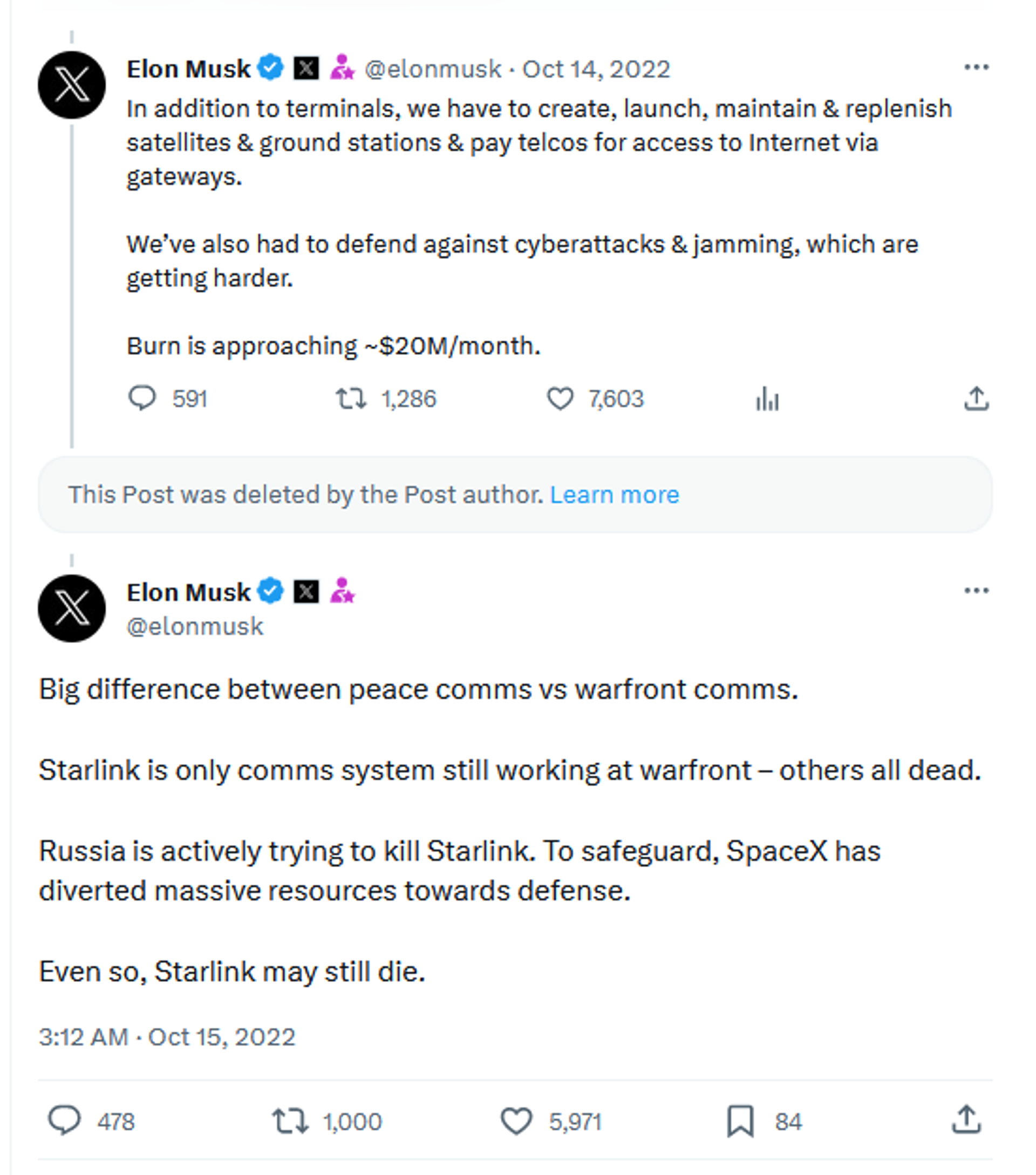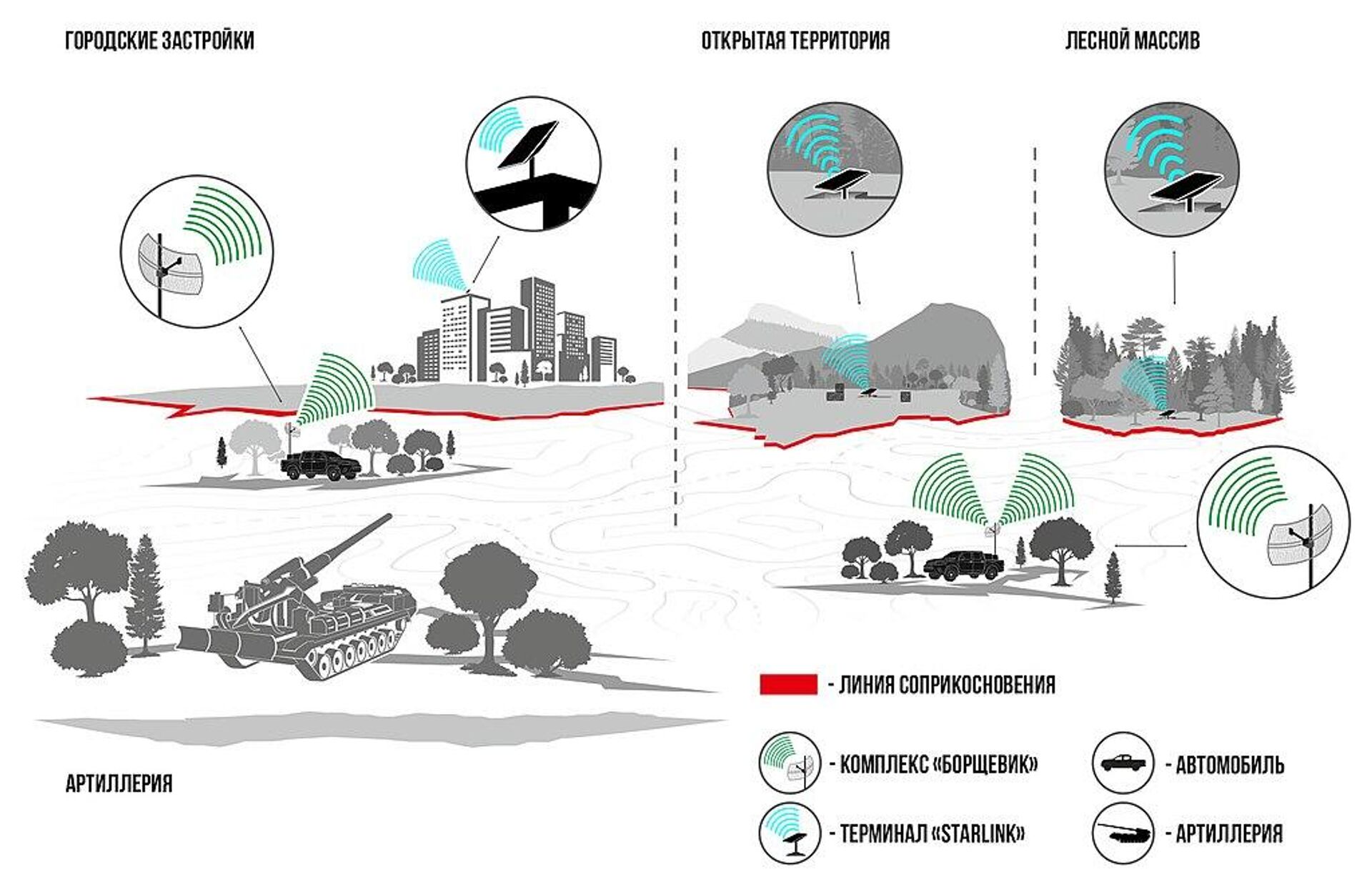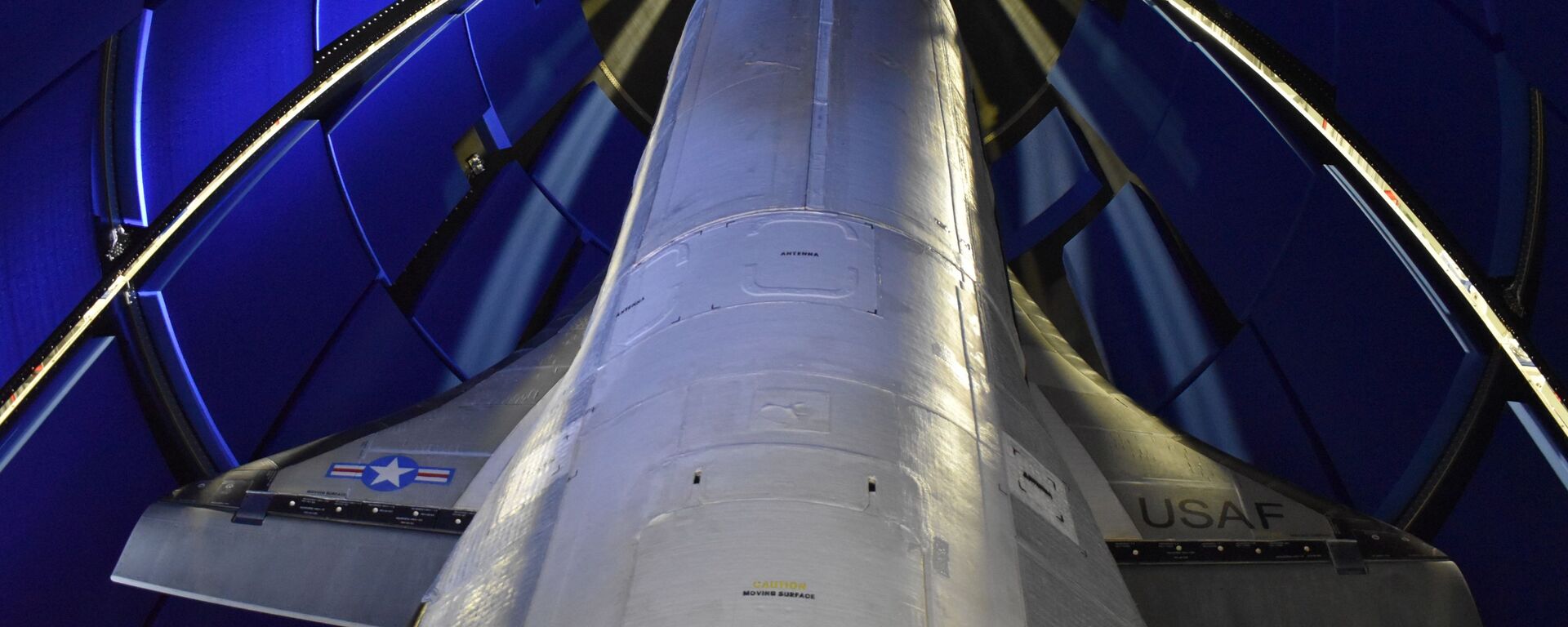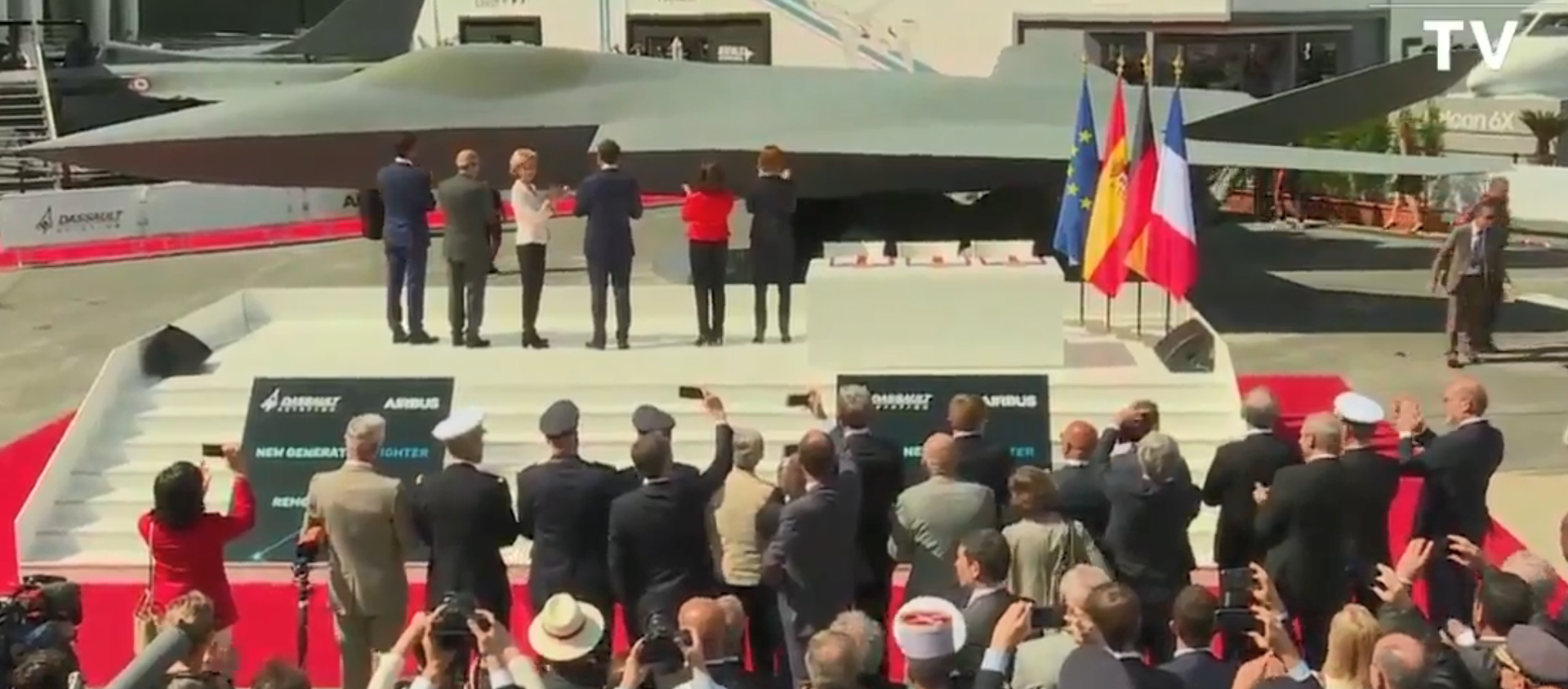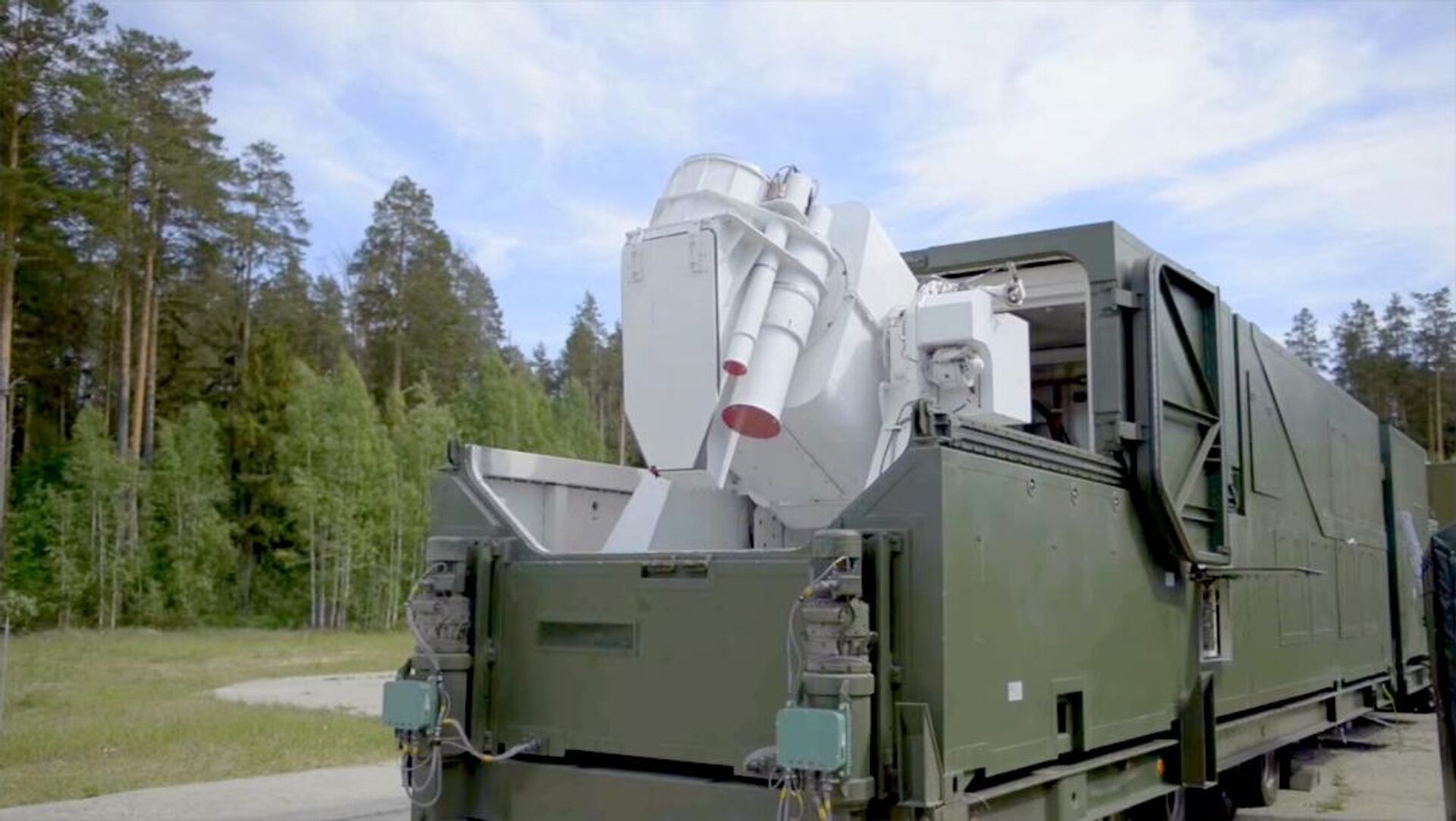https://sputnikglobe.com/20231004/how-russias-space-forces-disable-starlink-satellites-without-breaking-international-law-1113930681.html
How Russia’s Space Forces Disable Starlink Satellites Without Breaking International Law
How Russia’s Space Forces Disable Starlink Satellites Without Breaking International Law
Sputnik International
Wednesday is Space Forces Day – the professional holiday dedicated to the personnel of the sub-branch of the Russian Aerospace Forces responsible for operations in space. How do the Space Forces help ensure global strategic stability? What role have they played in Ukraine? Sputnik reached out a top Russian expert in the field for answers.
2023-10-04T17:31+0000
2023-10-04T17:31+0000
2023-10-04T18:07+0000
military
russia
ukraine
space forces
starlink
international space station (iss)
earth
satellite
anti-satellite capabilities
russian military
https://cdn1.img.sputnikglobe.com/img/07e7/0a/04/1113929892_0:189:2970:1860_1920x0_80_0_0_899e5c29b4a22d171d3f551638c3b356.jpg
The Space Forces are one the most prestigious branches of the Russian military, with their mission including more than half-a-dozen critical functions, including:Established as a separate branch of the Armed Forces in 2001, subsumed into the Aerospace Defense Forces in 2011, and recreated as a sub-branch of the Aerospace Forces in 2015, the Space Forces owe their historical roots to the Soviet-era Central Directorate of Space Facilities under the Strategic Missile Forces, created in 1964 at the dawn of the Space Age. The Space Forces’ professional holiday, October 4, coincides with the launch of the world’s first artificial satellite – Sputnik-1, on October 4, 1957.What’s the Difference Between Russia’s Space Forces and America’s Space Force?Unlike the US Space Force, whose mission highlights plans to secure US “interests in, from, and to space,” including via attempts to gain strategic supremacy, the Russian military’s ambitions in outer space are restricted by Moscow’s commitment to the Proposed Prevention of an Arms Race in Space (PAROS) Treaty – a prospective pact first floated by Russia and China in 2008 designed to preempt and prevent future space-based confrontations between the superpowers and the buildup of military capabilities in this potential theater of operations.In recent years, Moscow and Beijing have repeatedly referred back to PAROS as a potential jumping-off point for negotiations with Washington, but have so far been rebuffed by successive US administrations, accusing the countries of concocting a “diplomatic ploy” meant to somehow give them a “military advantage” over the US.Space Forces of the FutureCharacterizing the Russian Space Forces as “the future,” Knutov pointed out that their mission over the coming decades will include responding to new technological challenges, including autonomous, nuclear-capable space planes like the Boeing X-37, as well as sixth-generation fighter jets operating in conditions of space and to slip in and out of Earth’s atmosphere.Modern MissionToday, the expert said, the Space Forces are tasked with monitoring space and detecting objects as small as a tennis ball.“Our unique monitoring system allows us to track these objects, and, if necessary, to change orbits [of spacecraft] in a timely manner so that collisions do not occur with other craft. A special directory exists in which all space-based objects are recorded. Moreover, in accordance with international law approved by a United Nations resolution, countries which place satellites into space must inform the UN about the purposes of their launch and the tasks the spacecraft will be charged with solving.”This directory includes thousands, if not tens of thousands, of objects, from operational and dead space satellites to space junk, “allowing us to make timely changes to the orbit of spacecraft like the International Space Station and other vehicles, and to monitor the spacecraft of our adversaries – first and foremost the United States,” Knutov noted.In addition, Russia’s capabilities include a series of “inspector satellites”– special maneuverable spacecraft designed to fly up to foreign satellites and inspect them – determining their true mission and thus reducing, if not eliminating outright, the practice of lying to the UN about satellites’ classification and mission.Space Forces’ Special Role in NATO Proxy War in UkraineThe escalation of the Ukraine crisis into a full-blown NATO proxy war against Russia last year demonstrated the often critical importance of tools at the Space Forces’ disposal, including satellites engaged in the collection of intelligence, and constellations of spacecraft providing guidance to long-range missiles and other ordinance.Last month, SpaceX and Tesla billionaire Elon Musk outraged Western officials and media after it was revealed that he had secretly ordered engineers not to allow his Starlink Internet satellites to be used by Ukraine to launch attacks on Crimea, for fear of escalating the proxy conflict with Russia into an all-out nuclear war.However, as Knutov points out, the Russian military has also been independently gaining capabilities to jam or otherwise disable Musk’s satellites over Ukraine, without relying on the billionaire’s goodwill, and without breaking international law – which treats the destruction of another country’s spacecraft, including satellites, as a casus belli.“If we’re talking directly about the satellites themselves, this involves acting upon their information transmission channels – jamming them by our signals. Starlink satellites are designed in such a way as to continue transmitting information until transmission is complete, meaning they will continue to transmit until the batteries run out and the satellites turn into scrap metal,” the observer noted. “In other words, this is a way to indirectly act upon the spacecraft, which does not violate any international agreements, but which, in fact, prevents its use to enable communications between headquarters and Ukrainian military units,” the military expert explained.Space Forces’ Capabilities in Times of WarIf the danger of escalation is no longer an issue, Russia has a number of additional systems – such as the Peresvet laser platform, which can directly “act upon” and blind optical reconnaissance satellites in the event of an official declaration of war, according to Knutov.“Thus, the satellites would stop performing their missions. There’s the possibility jamming signals, altering GPS coordinates, and so on. That is, a whole range of electronic warfare equipment and weapons based on new physical principles, primarily laser weapons, exist which can directly influence the situation in space and the actions of enemy reconnaissance equipment,” the expert said.When it comes to space-based weapons tasked with physically destroying enemy spacecraft, Knutov pointed to the capabilities of the MiG-31 supersonic interceptor, which can launch small payloads into space, including anti-satellite missiles, and to the Soviet-era "Destroyer of Satellites" program – designed to physically ram into and destroy enemy spacecraft (work on this program halted at the close of the Cold War).Ultimately, with advances in technology and the means of destruction, Knutov expects the functions and tasks of Russia’s Space Forces to continue to expand in number and complexity, including to one day counter the capabilities of next-generation unmanned fighters.Knutov emphasized that if and when Russia’s adversaries start to field new strategic, space-based weapons like the Boeing X-37, it will be “absolutely vital” monitor and target “such devices in flight to prevent attacks from space on the territory of our country.”
https://sputnikglobe.com/20230612/us-space-force-needs-systems-to-disrupt-degrade-other-nations-satellites---general-1111093249.html
https://sputnikglobe.com/20190617/watch-euro-defense-ministers-reveal-sixth-gen-future-combat-air-system-1075922536.html
https://sputnikglobe.com/20230928/spacex-receives-contract-for-starshield-pentagons-version-of-starlink-satellite-network-1113773601.html
https://sputnikglobe.com/20210522/boeing-x-37-spacecraft-could-carry-up-to-6-nuclear-warheads-russian-defence-tech-company-says-1082966235.html
russia
ukraine
earth
Sputnik International
feedback@sputniknews.com
+74956456601
MIA „Rossiya Segodnya“
2023
News
en_EN
Sputnik International
feedback@sputniknews.com
+74956456601
MIA „Rossiya Segodnya“
Sputnik International
feedback@sputniknews.com
+74956456601
MIA „Rossiya Segodnya“
russia, ukraine, elon musk, starlink, satellite, space forces, russian space forces, capabilities, jamming
russia, ukraine, elon musk, starlink, satellite, space forces, russian space forces, capabilities, jamming
How Russia’s Space Forces Disable Starlink Satellites Without Breaking International Law
17:31 GMT 04.10.2023 (Updated: 18:07 GMT 04.10.2023) October 4 is Space Forces Day – the professional holiday dedicated to the personnel of the sub-branch of the Russian Aerospace Forces responsible for operations in space. How do the Space Forces help ensure global strategic stability? What role have they played in Ukraine? Sputnik reached out a top Russian expert in the field for answers.
The Space Forces are one the most prestigious branches of the Russian military, with their mission including more than half-a-dozen critical functions, including:
24/7 round-the-clock monitoring for potential non-man-made space-based threats and hazards to Russia and Earth;
Watching out for enemy strategic missile launches, and operating a series of space and ground-based monitoring systems to warn the nation’s leadership of such possible aggression;
Launching, operating, and maintaining about 120 military and dual use spacecraft, including communications, radio, and optical reconnaissance satellites, and ensuring the smooth operation of Russia’s space ports;
Providing important information to other branches of the military, as well as relevant civilian ministries, using space-based satellite monitoring resources;
Taking countermeasures using force against enemy space-based systems in times of war, if possible;
Taking countermeasures without resorting to force and in line with the principles of international law against adversaries’ space-based systems in the absence of a formal state of war (more on this below);
Keeping tabs on space-based man-made objects and reporting potential dangers of collisions with other objects to allow satellites, spacecraft, and space stations to make necessary course corrections and avoid damage or destruction;
Inspecting foreign spacecraft using specialized space-based equipment to determine if they have a military purpose.
Established as a separate branch of the Armed Forces in 2001, subsumed into the Aerospace Defense Forces in 2011, and recreated as a sub-branch of the Aerospace Forces in 2015, the Space Forces owe their historical roots to the Soviet-era Central Directorate of Space Facilities under the Strategic Missile Forces, created in 1964 at the dawn of the Space Age. The Space Forces’ professional holiday, October 4, coincides with the launch of the world’s first artificial satellite – Sputnik-1, on October 4, 1957.
What’s the Difference Between Russia’s Space Forces and America’s Space Force?
Unlike the US Space Force, whose mission highlights plans to secure US “interests in, from, and to space,”
including via attempts to gain strategic supremacy, the Russian military’s ambitions in outer space are restricted by Moscow’s commitment to the
Proposed Prevention of an Arms Race in Space (PAROS) Treaty – a prospective pact first floated by Russia and China in 2008 designed to preempt and prevent future space-based confrontations between the superpowers and the buildup of military capabilities in this potential theater of operations.
In recent years, Moscow and Beijing have
repeatedly referred back to PAROS as a potential jumping-off point for negotiations with Washington, but have so far been rebuffed by successive US administrations, accusing the countries of concocting a “diplomatic ploy” meant to somehow give them a “military advantage” over the US.
Space Forces of the Future
“In general, we can characterize the Space Forces as the forces involved in solving problems to turn our country into not just a space power, but a power able to compete with the United States and other nations betting on space, on equal terms,” Russian military historian Yuri Knutov, director of the Museum of Air Defense Forces, told Sputnik.
Characterizing the Russian Space Forces as “the future,” Knutov pointed out that their mission over the coming decades will include responding to new technological challenges, including autonomous, nuclear-capable space planes like the Boeing X-37, as well as sixth-generation fighter jets operating in conditions of space and to slip in and out of Earth’s atmosphere.
Today, the expert said, the Space Forces are tasked with monitoring space and detecting objects as small as a tennis ball.
“Our unique monitoring system allows us to track these objects, and, if necessary, to change orbits [of spacecraft] in a timely manner so that collisions do not occur with other craft. A special directory exists in which all space-based objects are recorded. Moreover, in accordance with international law approved by a United Nations resolution, countries which place satellites into space must inform the UN about the purposes of their launch and the tasks the spacecraft will be charged with solving.”
This directory includes thousands, if not tens of thousands, of objects, from operational and dead space satellites to space junk, “allowing us to make timely changes to the orbit of spacecraft like the International Space Station and other vehicles, and to monitor the spacecraft of our adversaries – first and foremost the United States,” Knutov noted.
In addition, Russia’s capabilities include a series of “inspector satellites”– special maneuverable spacecraft designed to fly up to foreign satellites and inspect them – determining their true mission and thus reducing, if not eliminating outright, the practice of lying to the UN about satellites’ classification and mission.
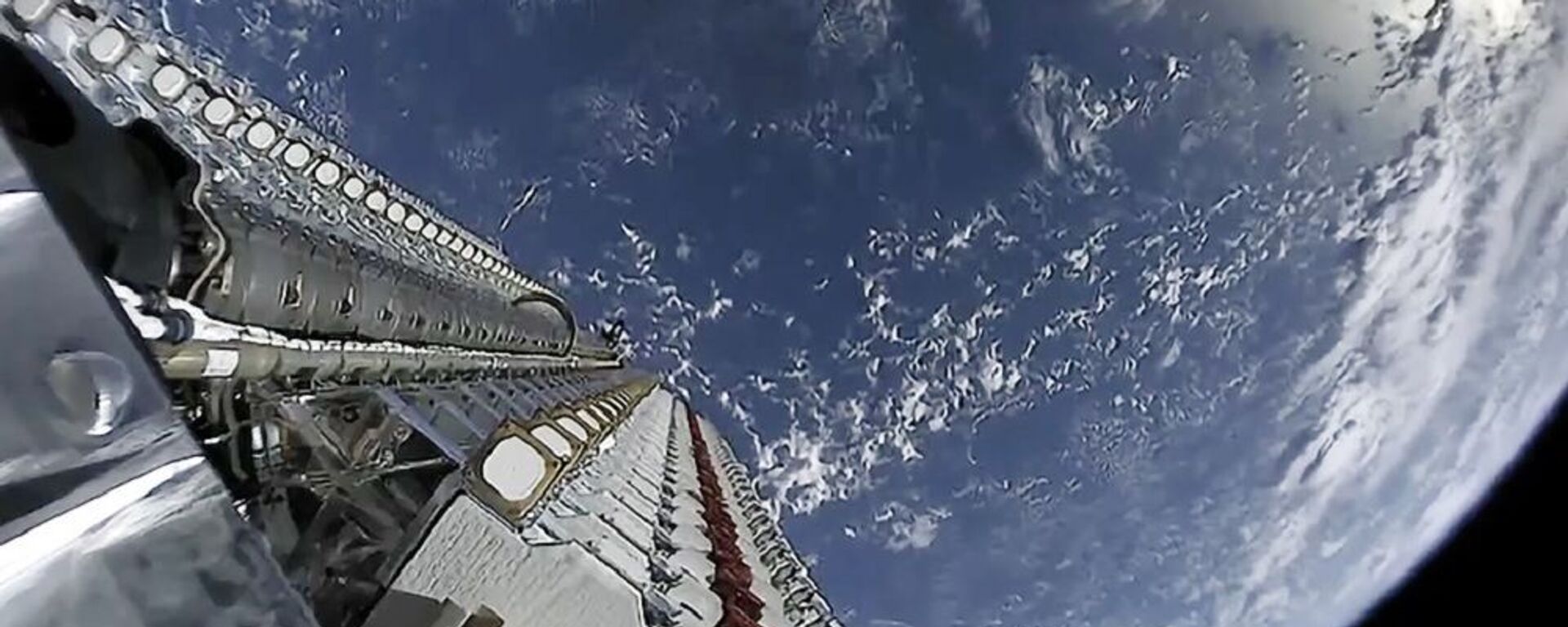
28 September 2023, 18:17 GMT
Space Forces’ Special Role in NATO Proxy War in Ukraine
The escalation of the Ukraine crisis into a full-blown NATO proxy war against Russia last year demonstrated the often critical importance of tools at the Space Forces’ disposal, including satellites engaged in the
collection of intelligence, and constellations of spacecraft
providing guidance to long-range missiles and other ordinance.
Last month, SpaceX and Tesla billionaire Elon Musk outraged Western officials and media after it was revealed that he had secretly ordered engineers not to allow his Starlink Internet satellites to be used by Ukraine to launch attacks on Crimea, for fear of escalating the proxy conflict with Russia into an all-out nuclear war.
However, as Knutov points out, the Russian military has also been independently gaining capabilities to jam or otherwise disable Musk’s satellites over Ukraine, without relying on the billionaire’s goodwill, and without breaking international law – which treats the destruction of another country’s spacecraft, including satellites, as a casus belli.
“We know very well about the satellite grouping created by Elon Musk providing Internet to Ukraine’s Armed Forces and the militaries of a number of other countries. In the combat zone, Starlink satellites have enabled stable communications between Ukrainian command and frontline units...In this connection, we were forced to create special systems to allow us to act upon the communication channels Starlink uses [to support the Ukrainian military, ed.]. These measures have been successful, and this was once acknowledged directly by Elon Musk,” Knutov recalled.
“We have created a number of systems, first and foremost in the realm of electronic warfare, which are capable of countering such [satellite-based] reconnaissance,” Knutov emphasized, citing, for example, the Borshevik – a ground-based radar designed to detect the operation of and pinpoint the location of Starlink terminals, with coordinates then handed over to Russian artillery and air power.
“If we’re talking directly about the satellites themselves, this involves acting upon their information transmission channels – jamming them by our signals. Starlink satellites are designed in such a way as to continue transmitting information until transmission is complete, meaning they will continue to transmit until the batteries run out and the satellites turn into scrap metal,” the observer noted. “In other words, this is a way to indirectly act upon the spacecraft, which does not violate any international agreements, but which, in fact, prevents its use to enable communications between headquarters and Ukrainian military units,” the military expert explained.
Space Forces’ Capabilities in Times of War
If the danger of escalation is no longer an issue, Russia has a number of additional systems – such as the Peresvet laser platform, which can directly “act upon” and blind optical reconnaissance satellites in the event of an official declaration of war, according to Knutov.
“Thus, the satellites would stop performing their missions. There’s the possibility jamming signals, altering GPS coordinates, and so on. That is, a whole range of electronic warfare equipment and
weapons based on new physical principles, primarily laser weapons, exist which can directly influence the situation in space and the actions of enemy reconnaissance equipment,” the expert said.
When it comes to space-based weapons tasked with physically destroying enemy spacecraft, Knutov pointed to the capabilities of the MiG-31 supersonic interceptor, which can launch small payloads into space, including anti-satellite missiles, and to the Soviet-era "Destroyer of Satellites" program – designed to physically ram into and destroy enemy spacecraft (work on this program halted at the close of the Cold War).
Ultimately, with advances in technology and the means of destruction, Knutov expects the functions and tasks of Russia’s Space Forces to continue to expand in number and complexity, including to one day counter the capabilities of next-generation unmanned fighters.
Knutov emphasized that if and when Russia’s adversaries start to field new strategic, space-based weapons like the Boeing X-37, it will be “absolutely vital” monitor and target “such devices in flight to prevent attacks from space on the territory of our country.”
“We have all seen the Star Wars movies; with these various fighters capable of carrying out combat missions in space, we are slowly approaching from a scientific standpoint a point where such weapons will appear in the near future” in the real world, “not just in Russia and the United States, but possibly other nations, including China and India. Therefore, the importance of the Space Forces is increasing, and increasing many times over,” the observer summed up.

